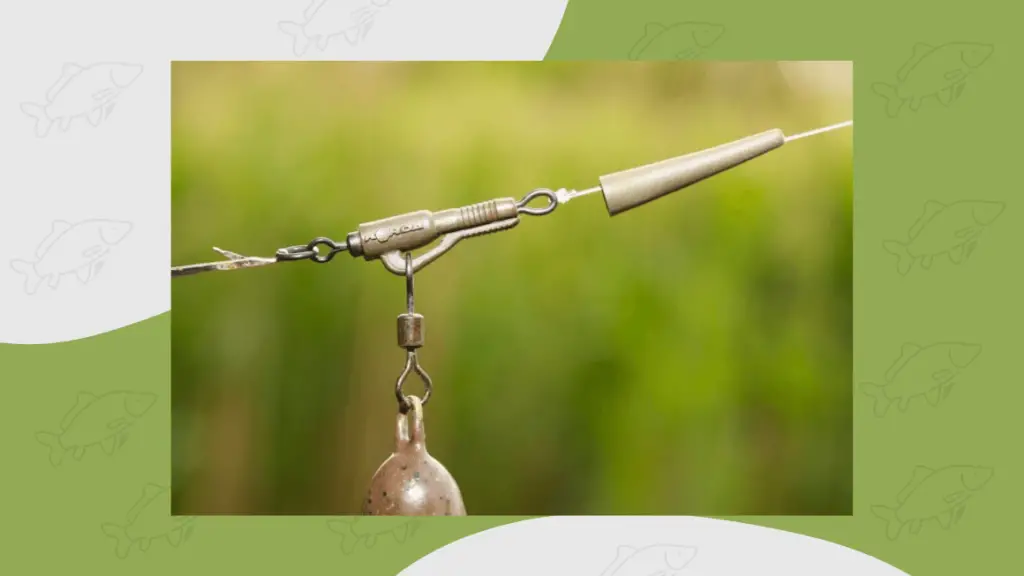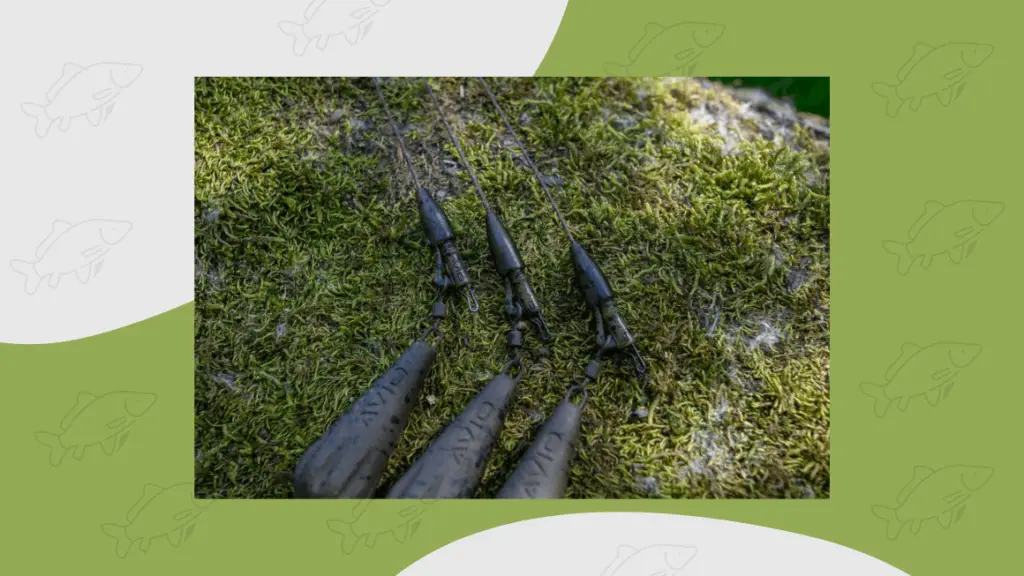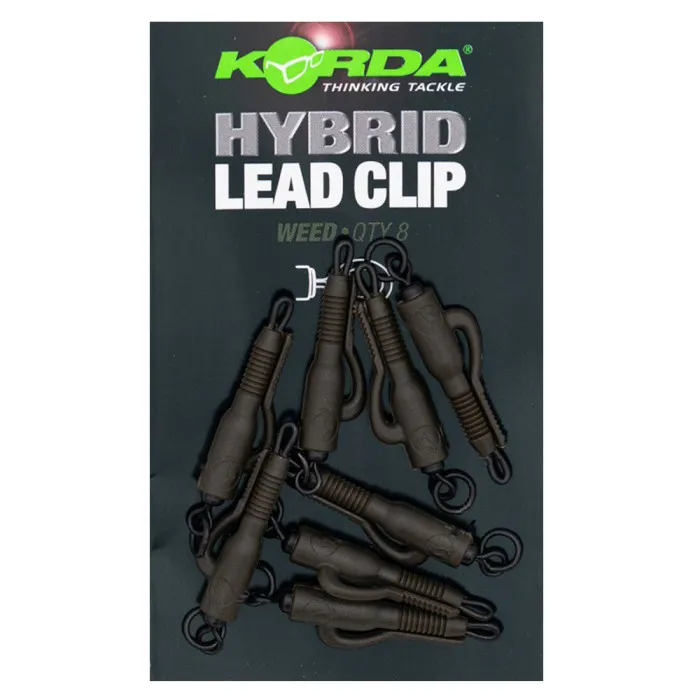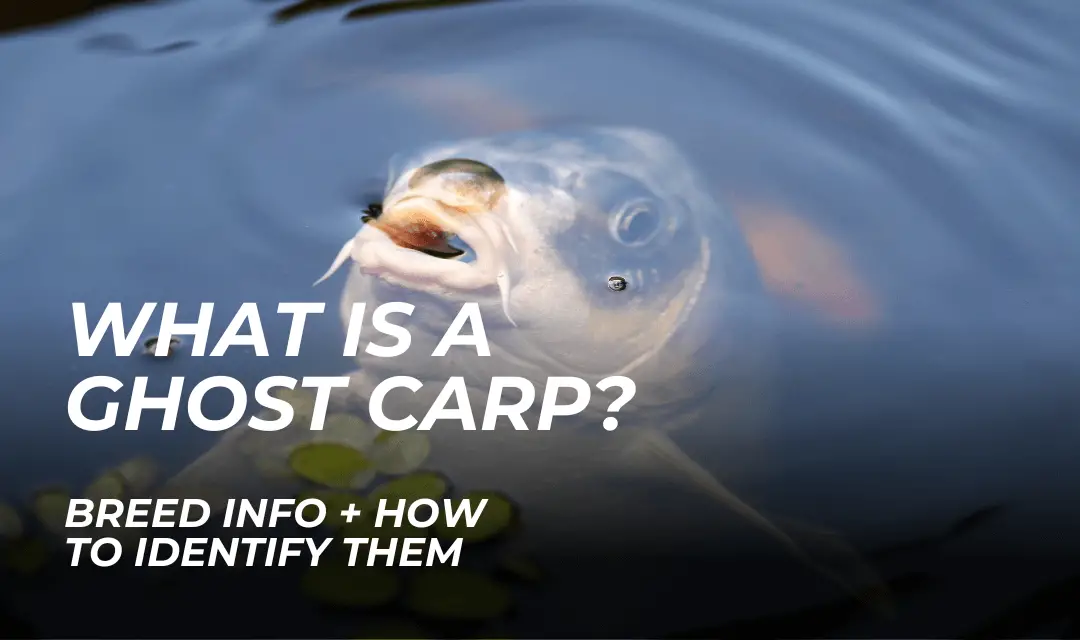The lead clip set up is one of the most popular lead arrangements for carp anglers. Offering great versatility and efficiency, lead clips were a pivotal development in carp rigs. So much so that many anglers use lead clips as their only lead arrangement.
Whilst there are times when a lead clip will outperform other lead setups like inline leads or helicopter rigs, there are also times when it’s worth favouring something else.
Let’s find out more about what a lead clip is and when you should choose to use one.
What is a lead clip set up?
A lead clip is essentially a plastic clip that sits above your hooklink and holds your lead in place in a semi-fixed position, separate to your mainline. It’s primary purpose is to allow the lead to become detached from your rig in the event that it becomes snagged in weed or debris.

Lead clips are typically made of two components; the clip, in which your hooklink swivel sits in, and the tail rubber which is pushed over the clip to secure the lead.
Both parts work in tandem, with the tail rubber being able to slide off the lead clip and release the lead in the event of a take or when the lead is snagged.
The invention of the lead clip by Kevin Nash in 1992 was seen as a pivotal advancement in carp rigs.
Widely known as the best and safest lead clips available on the market.
- Incredibly safe, with no need for hinges or locking pins
- Perfect for casting heavy leads
- Available in all colours to compliment the rest of the Korda range
What are the benefits of using lead clips?
Easily drop the lead
Lead clips allow the lead to eject in the event of it being snagged in weed. With carp anglers using bigger leads, they are often the first thing to become stuck in weed during the fight, making it much harder to land a carp.
With a lead clip set up correctly (loosely), it can eject the lead as soon as a fish is hooked, improving the likelihood of you landing it safely.
Safer for crack offs and cut offs
With easy ejection, lead clips are the safest lead arrangement available on the market. In areas where you may be cut off or crack off at distance, it’s important to be using a semi-fixed lead where it can easily eject.
The last thing anyone wants is a carp picking up an old rig that has a 3oz lead attached to it that it can’t get rid of.
When to use a lead clip rig?
Realistically, lead clips can be used in 99% of angling situations and will work. That being said, there are some times when they will work better than others:
Fishing on clear gravel
When you’ve got the benefit of fishing over a hard bottom like gravel, it just makes sense to opt for a lead clip setup. They’re super versatile, allowing you to quickly change hooklinks and drop the lead on the event of a take if you want to. A lead clip is my choice when fishing over any lakebed clear of debris, weed or deep silt.
Fishing near dense weed beds
Dense weed beds cause a huge headache when it comes to landing carp. One things for sure though, the sooner you can drop the lead, the quicker carp rise up through the layers and become easier to control.
It’s for that reason that lead clips are great when fishing clear spots close to weed.

Fishing at range
Lead clips are neat and aerodynamic, lending themselves well to fishing at range. Whilst I wouldn’t say they beat helicopter rigs, they do offer a safer alternative.
When not to use a lead clip rig?
Whilst lead clips work well in 99% of situations, here are a few times when you may opt to choose a different lead arrangement:
Solid PVA bag fishing
Lead clips are just too bulking and cumbersome to fit nicely in PVA bags, and take up the all important space which should be filled with pellets.
In this scenario, it makes much more sense to opt for a neater inline lead setup that can be tucked nicely inside of the bag.
Fishing in the edge
Lead clip set ups will work anywhere, but for fishing in the edge, many people opt for inline leads instead. When fishing in the edge, you don’t need to worry about leads plugging into the silt too much and inline leads will give you better hooking potential too.
When you’re fishing in really deep silt
Silt is probably the most difficult lakebed for presenting a bait on. The softer the silt, the higher the probability of your hooklink and hookbait being pulled out of sight of carp.
Lead clips are not the most ideal set up for silt fishing due to how close the hooklink is to the lead. In deep silt, it’s better to use a helicopter rig where the hooklink has greater separation from the lead arrangement.
Are lead clips always safe?
Whilst lead clips are one of the safest lead arrangements out there, they have to be used correctly. Some anglers have a tendency to push the tail rubber on too far, rendering the whole set up useless and unsafe.
As soon as the tail rubber is unable to come free from the clip, you’ve essentially created a death rig with a fixed lead. So whilst lead clips are considered safe, there is a fine balance to find between fishing a safe and an unsafe rig!
Here are some things you can do to ensure that you lead clip set up is safe:
Wet the lead clip
Apply plenty of saliva to the lead clip before pushing the tail rubber on. And remember not to push the tail rubber on too far. A quarter of the way is usually enough to easily eject the lead.
You can test it before casting out by pulling the lead in the opposite direction to the hook. The lead should easily come free of the clip.
Cut down the lead clip to make it safer
It’s unknown why some tackle companies manufacturer lead clips that are so long. In my eyes this only makes it easier and more inviting for people to ram the tail rubbers on too far. I’ve opted to cut them down in the past to make the leads easier to slide off.
Remove the tail rubber completely
If you’re really desperate to drop the lead on every occasion, you can opt to remove the tail rubber completely. Just use some PVA tape to tie over the lead clip to keep you lead safe on the cast.
Be careful combining a lead clip with The Magic Twig
If you’re using the One More Case Magic Twig alongside a lead clip, try to be sure that you’re not fishing in and around snags.
Whilst Ali Hamidi has done everything he can to convince anglers of it’s safety, there are still doubts as to how the easy the legs are to bend and snap in weedy/snaggy conditions.
Our advice? If you want to use The Magic Twig with a lead clip, save it for waters where there is no chance of it becoming weeded up or tethered on snags.
How to set up a lead clip
About the writer

Rob W
I’m Rob, Carp Squad’s main contributor. I’ve been carp fishing on and off for 15 years, but the bug is well and truly back at the moment. Hopefully the articles I write on here help you put more carp on the bank.



![Stocks Lake Norton Disney [Tips & Tactics]](https://carpsquad.com/wp-content/uploads/2023/11/stocks-lake-norton-disney-2-1.png)

